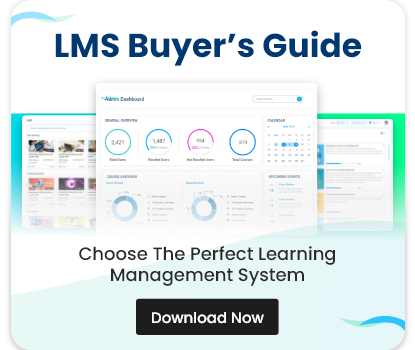In today’s fast-paced world, organizations across various sectors are adopting hybrid learning models to optimize training and development. By blending online and in-person training, hybrid models offer the best of both worlds—flexibility, convenience, and hands-on engagement. This approach is particularly valuable in today’s evolving workforce, where employees often juggle different schedules, locations, and learning preferences. In this blog, we’ll explore the benefits of hybrid learning models, how they can enhance training outcomes, and best practices for implementing them effectively.
What is a Hybrid Learning Model?
A hybrid learning model combines the flexibility of online learning with the interactivity and engagement of in-person training. In this model, learners typically complete part of their training online—through webinars, e-learning modules, or virtual classrooms—while attending in-person sessions for more practical, hands-on experiences and collaborative activities. This approach provides a balanced learning experience accommodating different learning styles, schedules, and geographic constraints.
Hybrid learning models can be implemented across various training contexts, from corporate employee development and academic courses to government and nonprofit training programs.
Why Hybrid Learning is Gaining Popularity
The hybrid learning model has gained significant traction for several reasons:
- Flexibility and Convenience: One of the primary advantages of hybrid learning is its flexibility. Employees or learners can complete online modules at their own pace, saving time and reducing travel costs. In-person sessions are often reserved for hands-on activities, discussions, or team-building exercises, creating a balance that caters to busy schedules.
- Catering to Different Learning Styles: Everyone learns differently. Some individuals excel in a self-paced, online environment, while others thrive in face-to-face interactions. By offering both online and in-person options, hybrid learning caters to a broader range of learning styles and ensures that content resonates with all participants.
- Cost-Effectiveness: Hybrid learning reduces costs associated with in-person training, such as travel, venue booking, and printed materials. It also allows organizations to scale their training programs more easily, reaching more employees with fewer resources.
- Technology Integration: Advances in digital technology make hybrid learning models more accessible. Virtual classrooms, interactive e-learning platforms, and collaboration tools enable seamless integration of online and in-person components. This combination ensures learners can access training materials anytime, anywhere, while still participating in live, in-person discussions or activities.
- Employee Engagement and Retention: Offering a mix of learning methods can boost engagement and help improve knowledge retention. In-person sessions provide real-time interaction, networking, and feedback opportunities, which can be difficult to achieve through online-only models. When blended with online learning, this interaction increases the overall effectiveness of training programs.
Key Benefits of Hybrid Learning Models
Hybrid learning models provide a range of benefits that can enhance both the learning experience and training outcomes for organizations:
- Improved Learning Outcomes
Hybrid learning allows employees to learn at their own pace through online modules, then apply what they’ve learned in hands-on, in-person sessions. This combination promotes better retention and understanding. Employees are more likely to grasp complex concepts when they can practice them in a real-world context. - Personalized Learning Experiences
By offering flexibility, hybrid learning can be personalized to meet the unique needs of learners. Employees can complete online portions based on their schedule, allowing for a tailored learning journey that maximizes engagement and effectiveness. In-person sessions can then be used to address specific challenges, provide clarification, or dive deeper into areas of interest. - Enhanced Collaboration and Networking
In-person components of hybrid learning foster collaboration among employees, encouraging networking and teamwork. Whether through group projects, workshops, or discussions, face-to-face interactions build connections and improve communication skills, which are vital in many professional environments. - Continuous Access to Resources
Online training materials, recorded sessions, and additional resources can be accessed by learners long after the in-person sessions are complete. This ensures that employees have continuous access to information and can revisit the content whenever they need a refresher. - Scalability
Hybrid learning allows organizations to reach a wider audience while maintaining quality and engagement. Online modules can be accessed by employees across different locations or time zones, while in-person components can be focused on smaller, more specialized groups. This scalability is especially useful for large organizations with a diverse workforce.
Best Practices for Implementing a Hybrid Learning Model
To maximize the effectiveness of a hybrid learning model, organizations should follow best practices that ensure seamless integration between online and in-person components:
- Define Clear Learning Objectives
Before implementing a hybrid model, it’s important to define clear learning objectives for both the online and in-person components. These objectives should complement each other, ensuring that learners understand what’s expected in each phase of the training. For example, online modules may introduce theoretical concepts, while in-person sessions may focus on practical application and real-world scenarios. - Leverage Technology to Create a Cohesive Experience
Use an integrated learning platform that can support both online and in-person training. An LMS (Learning Management System) should allow easy access to e-learning materials, provide real-time tracking of progress, and enable communication between learners and instructors. For in-person sessions, use tools like virtual classrooms or collaborative software to keep the learning experience consistent and connected. - Maintain a Balance Between Online and In-Person Training
Finding the right balance between online and in-person training is key to creating an effective hybrid model. Online modules should be designed to deliver foundational knowledge, while in-person sessions should focus on interactive activities, skill-building exercises, and discussions. By balancing the strengths of both formats, organizations can ensure that employees remain engaged and absorb the material effectively. - Offer Continuous Support and Feedback
Providing ongoing support throughout the hybrid learning journey is critical. Ensure that employees have access to mentors, instructors, or peers who can answer questions, provide feedback, and offer guidance. Consider setting up discussion forums or office hours to encourage interaction between online and in-person participants. - Monitor Progress and Gather Feedback
It’s important to track learners’ progress and gather feedback to continuously improve the hybrid learning model. Use data and analytics to assess learner performance and identify areas that may need further attention. Solicit feedback from employees on their experience with the hybrid model to make adjustments as necessary. - Encourage Social Learning
Social learning plays a key role in hybrid models by fostering collaboration and engagement. Encourage learners to interact through online discussions, group activities, or collaborative projects. By promoting a sense of community, employees are more likely to stay motivated and committed to their learning journey.
Challenges and Considerations
While hybrid learning models offer numerous advantages, there are some challenges to consider:
- Technology Barriers: Employees who lack access to reliable internet or digital devices may face challenges with the online components. To address this, ensure that employees have the necessary tools or provide alternative options.
- Engagement: Keeping learners engaged in an online environment can be difficult, especially for longer sessions. Use interactive elements such as quizzes, polls, and videos to maintain attention and encourage participation.
- Logistics and Coordination: Coordinating schedules for in-person sessions can be challenging, especially if employees are spread across different locations. Plan in advance to minimize scheduling conflicts and ensure that all employees can participate.
Conclusion
Hybrid learning models are a powerful way to deliver flexible, scalable, and engaging training that meets the needs of today’s workforce. By blending the best aspects of online learning and in-person training, organizations can create comprehensive learning experiences that cater to diverse learning styles, improve knowledge retention, and maximize employee performance. Whether in corporate training, higher education, or public sector organizations, adopting a hybrid learning approach can enhance the overall learning experience while achieving measurable training outcomes. With the right technology, planning, and support, hybrid learning is set to become the future of training and development.










